The 10 Best Account Reconciliation Software Options for Accounting Teams
.webp)
Account reconciliation software has emerged as an indispensable tool, enabling businesses and financial professionals to seamlessly align their transactional data and ensure the integrity of their financial records.
Whether you're a seasoned accountant or a CFO looking to enhance financial clarity across the business, understanding the nuances of this software can be a game-changer.
In this guide, we delve into what account reconciliation software is, how it functions, and spotlight some of the best reconciliation software solutions in the industry to help accounting teams navigate their financial journey with informed confidence.
Meanwhile, Numeric offers the best all-in-one account reconciliation solution that comes with advanced month-end features, user-friendly interface, and deep ERP integrations. Sign up for a full tour of the product via a personalized demo.
Table of Contents
- Key Takeaways: The 3 Best Account Reconciliation Software Vendors
- What is Account Reconciliation Software?
- The Top 10 Account Reconciliation Software Tools
- Why is Account Reconciliation Important?
- FAQs about Account Reconciliation Software
Key Takeaways: What is the Best Tool for Account Reconciliation?
Finding the best account reconciliation software depends on your specific needs. Here are a few top picks based on different criteria:
1. Numeric: Best overall account reconciliation software, equipped with robust month-end close tools, intuitive design, and the deepest ERP integrations
2. BlackLine: Strong fit for larger enterprises with dedicated full time staff that can structure their instance effectively.
3. FloQast: Ideal option for small to mid-sized businesses that use ERPs such as Microsoft Dynamics and SAP
By considering the tools above, you'll be well-equipped to make a choice that not only streamlines financial processes but also offers long-term value to your organization.
What is Account Reconciliation Software?
Account reconciliation software is designed to automate, streamline, and enhance the accuracy of the account reconciliation process in financial accounting.
This technology plays a pivotal role in comparing internal financial records against monthly statements from external sources, such as banks or other financial institutions, and the general ledger, ensuring consistency, correctness, and alignment across all transactions.
Key features of this software include:
- Automated Matching: At its core, this software can automatically match and compare large volumes of transactions, highlighting discrepancies without manual intervention.
- Centralized Data: It offers a unified platform where all financial statements can be stored, accessed, and reviewed, facilitating smoother reconciliations.
- Customizable Rules: Users can set specific rules and criteria for automated reconciliations, ensuring flexibility and tailored results.
- Exception Handling: Any discrepancies or unmatched transactions are flagged for review, allowing for swift identification and resolution.
- Audit Trails: These tools maintain a detailed record of reconciliation actions, ensuring transparency and ease of reference for compliance purposes.
- Integrations: Most of these software options seamlessly integrate with other accounting and financial systems, ensuring smooth data transfer and comprehensive coverage.
By bridging the gap between internal records and external financial statements, account reconciliation software significantly reduces the risk of financial errors, ensures regulatory compliance, and brings efficiency to a traditionally manual and time-consuming process.
The need for such a system grows in parallel with the complexity and volume of a business's transactions. From multinational corporations with multiple bank accounts in different currencies to small businesses aiming for financial precision, this software caters to a diverse array of financial reconciliation needs.
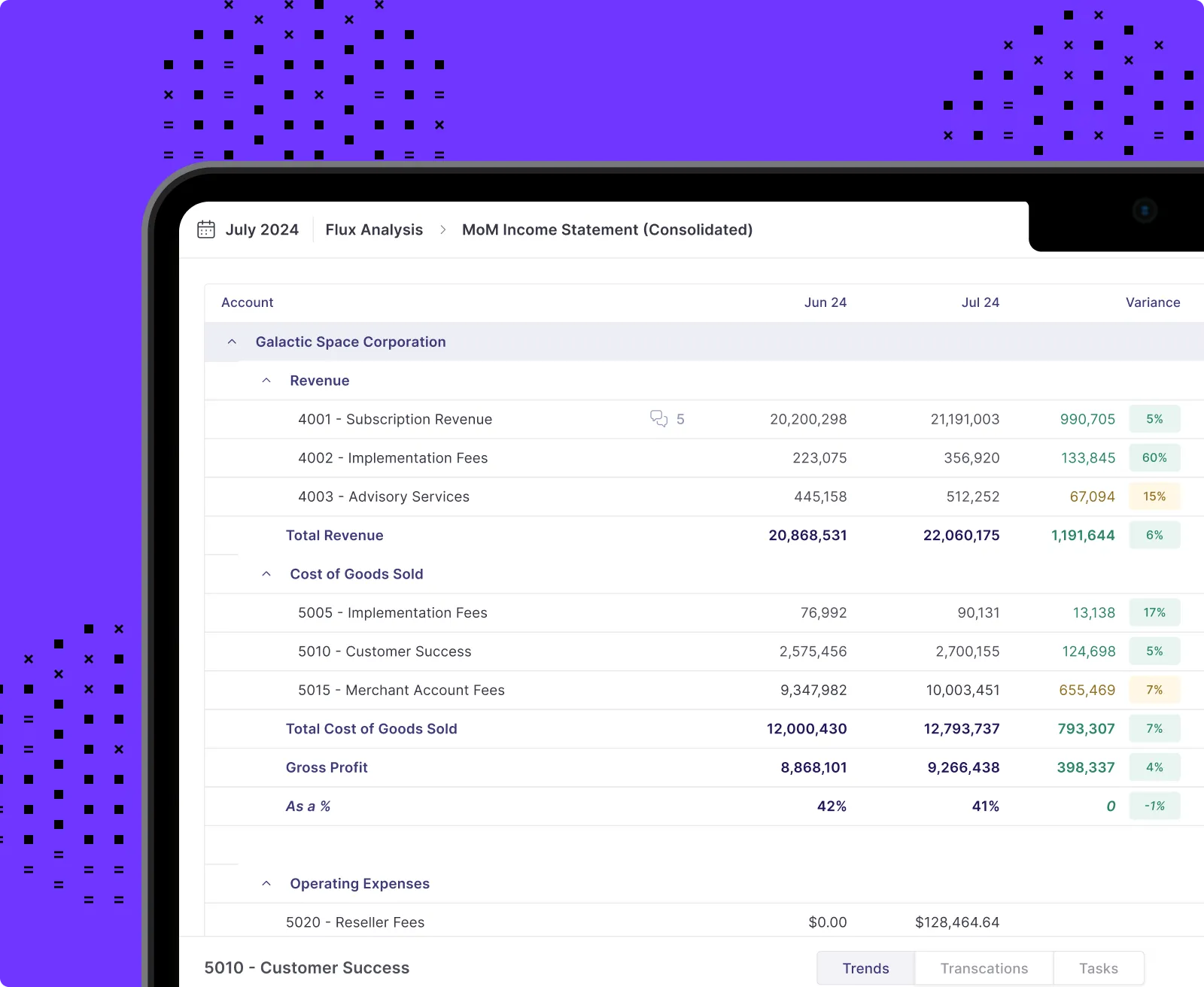
The Top 10 Account Reconciliation Software Tools
With so many options available on the market, choosing the best account reconciliation software is crucial.
Here's a quick overview of the leading tools for 2025, including their key features, pros and cons, and pricing structure.
Next, you can dive into the specificities of each of these software options in more detail to make sure that you choose the right fit for your team. To provide you with the most value, we've started with the most common and recommended tools, before moving onto general ledgers with account reconciliation capabilities and wrapping up with additional options.
1. Numeric
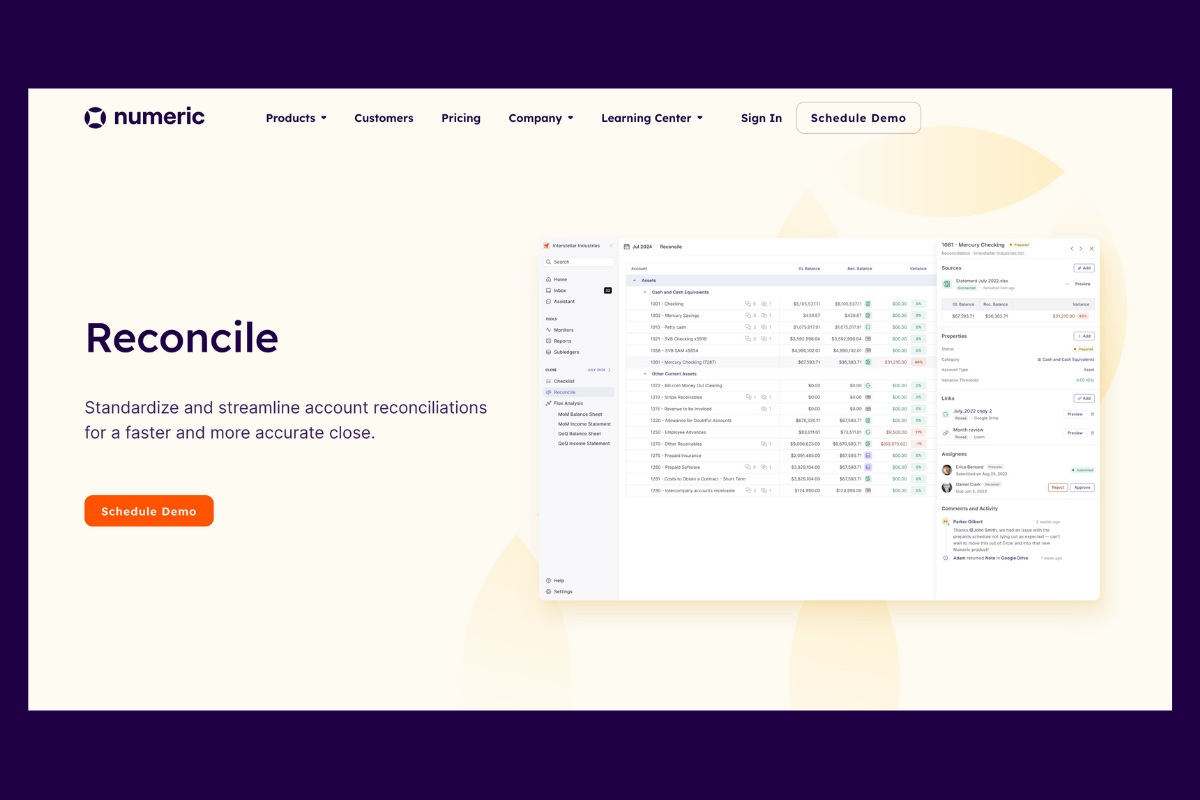
Best for: Mid-sized to large enterprises that require a comprehensive and scalable account reconciliation solution with strong automation and reporting capabilities
How Numeric Helps Finance Teams
Numeric helps accounting teams manage the month-end close process, automate account reconciliations, and conduct flux analysis and ad hoc reporting. With the deepest ERP integrations out of the listed account reconciliation tools, Numeric stands out for being able to call out which exact transactions result in an account no longer reconciled.
Numeric Features
- Task Management Purpose-Built for Accountants: Streamline assignment of tasks required in account reconciliations, mark dependencies with other workflows, and set up controls to ensure that your ready come time for an audit.
- Direct Connection to Your Existing Workpapers: Avoid pulling up workpapers and GL entries side by side as Numeric connects with your file storage in real time to ensure your numbers are always up to date.
- Visibility into Transactions Resulting in Discrepancies: If a balance changes after the account has been reconciled, alerts ensure you get notified and can easily view the account history to identify the transactions causing the difference.
- Team Connect: Have your team members stay updated with dedicated notifications, comment functionality, and Slack updates, ensuring a smooth flow of communication.
- Advanced Search and Pivoting: A high-powered search for every transaction in your GL complemented by diverse filters for quick data access and pivoting directly in the tool.
- Top-Notch Security: With SOC 2 certification, SSO & SAML, and encryption, your data's security remains uncompromised.
- Enhanced Productivity: Boost efficiency with detailed progress breakdowns and user-friendly shortcuts.
Numeric Pros
- Ahead-of-the-curve implementation of AI and automation
- Deep ERP integrations with transaction-level details viewable directly within the product
- Easy implementation and use
Numeric Cons
- Fewer – but deeper – integrations with ERPs than alternatives (Numeric integrates with NetSuite, QuickBooks Online, Xero, and Sage Intacct)
Numeric Pricing
Customers can choose from three Numeric plans, with the pricing depending on the GL and the number of team members:
- Starter: This plan is ideal for teams that want to organize the close process and improve control and visibility. Pricing starts at $30/month/user.
- Growth: This plan helps streamline and consolidate the financial close through integrations and automations, like reconciliation and flux analysis. Pricing is custom.
- Enterprise: This plan provides access to advanced features, such as transaction monitors, that help implement a proactive monthly close. Pricing is custom.
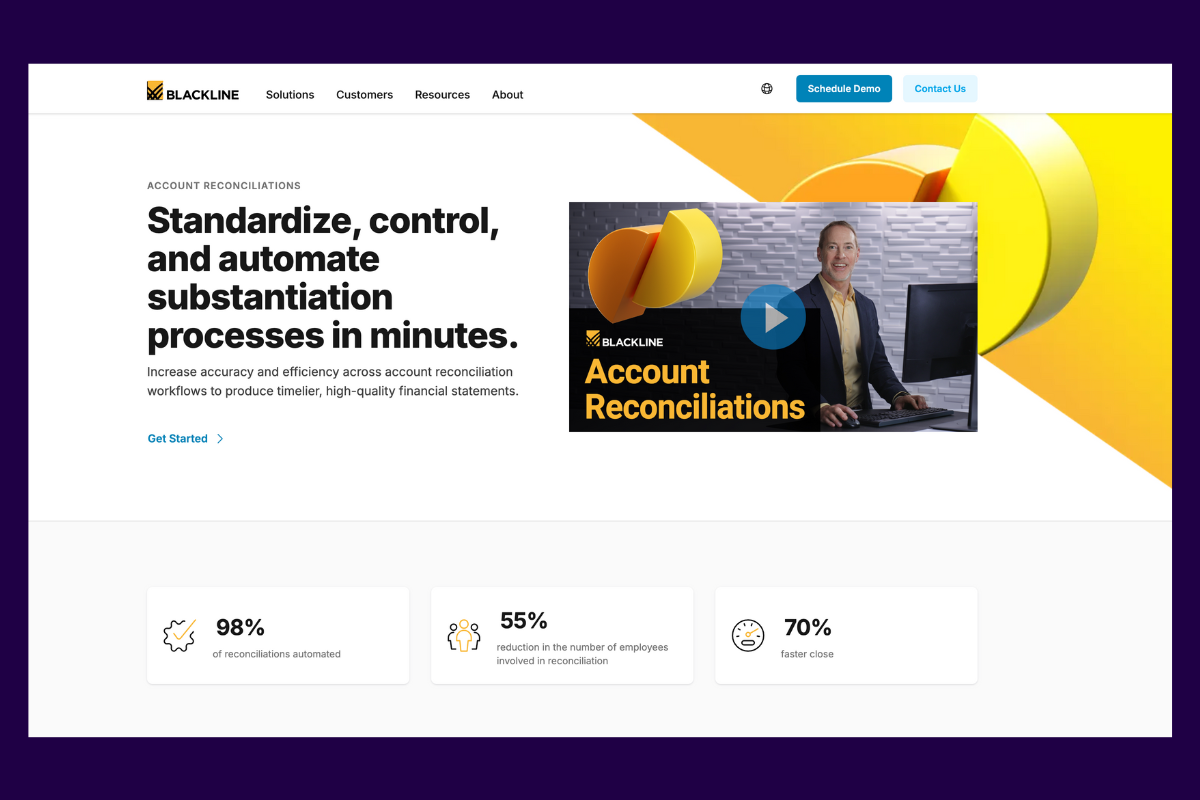
2. BlackLine
Best for: Large enterprises with dedicated admin for implementation
How Blackline Helps Finance Teams
BlackLine enhances the accuracy and efficiency of financial close cycles by automating account reconciliations, making it ideal for teams that require high flexibility and integration with other BlackLine tools.
BlackLine Features
- Automated Account Reconciliation: Streamline the reconciliation process by automatically comparing account balances, reducing manual errors and ensuring accurate financial data.
- Integrated Suite: Provides a unified platform that enhances control, accuracy, and efficiency across the entire accounting process.
- Real-Time Oversight: Utilize a live dashboard to monitor account reconciliations and close activities, ensuring timely completion and compliance with regulatory requirements.
- Comprehensive Audit Trail: Simplify audit preparations with a complete log of all activities, supported by SOX compliance.
BlackLine Pros
- Highly customizable platform
- Robust reporting features
- Strong security protocols
BlackLine Cons
- Steeper learning curve than most alternatives
- Higher upfront costs
- Need for a dedicated admin
- Integration only at the trial balance level for reconciliations
BlackLine Pricing
BlackLine pricing is customized based on the company's needs. Generally, this software ends up costing significantly more than competitors and includes a number of fees, such as an implementation fee, configuration fee, data migration cost, annual subscription, and admin fees.

3. FloQast
Best for: Small- to mid-sized companies, particularly those using Microsoft Dynamics and SAP
How FloQast Helps Finance Teams
FloQast accelerates the financial close process by automating account reconciliations, allowing finance teams to quickly compare workpapers in Excel with the general ledger. This reduces manual efforts, ensuring accuracy and efficiency in closing the books.
FloQast Features
- Automated Reconciliation: Automatically compares subledger balances with the GL, minimizing manual reconciliations and reducing errors.
- Close Checklist: Efficiently manage workflows and assign tasks, ensuring a clear and timely closing process.
- Collaboration Tools: Enhance real-time communication, documentation sharing, and review processes across teams.
- Seamless Integration: Integrates with major accounting and ERP systems, ensuring smooth data flow.
- Built-in Compliance: Ensures adherence to regulatory standards, securing the account reconciliation and closing processes.
- Shared Dashboard: Provides real-time insights into reconciliation progress, identifies bottlenecks, and ensures tasks are completed on time.
FloQast Pros
- Integration with numerous ERPs
- Clear implementation
FloQast Cons
- Limited customization options
- Integration only at the trial balance level for reconciliations, resulting in more work being done in Excel
FloQast Pricing
FloQast pricing starts at approximately $999/month.
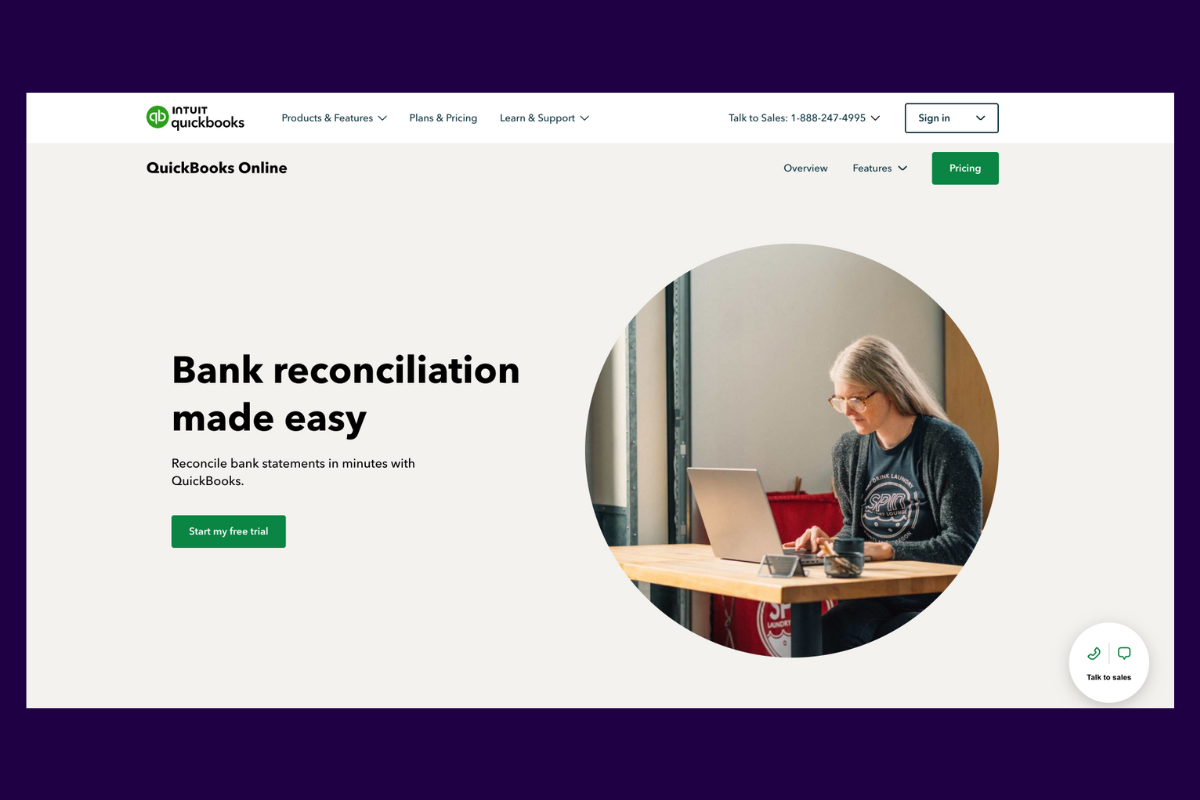
4. QuickBooks
Best for: Small businesses and freelancers looking for an affordable, easy-to-use accounting solution that also includes basic account reconciliation tools
How QuickBooks Helps Finance Teams
QuickBooks simplifies bookkeeping, invoicing, and financial management, making it ideal for businesses that need straightforward accounting automation software with minimal setup. While it's primarily a general ledger, QuickBooks does include some account reconciliation features built into the product.
QuickBooks Features
- Bank Reconciliations: Match transactions on the bank statement to the accounting records with ease.
- Import Transactions: Automatically import and categorize expenses from your bank accounts, credit cards, Square, etc., making it easy to manage and monitor spending.
- Reconciliation Reports: Get automatic reports that summarize beginning and ending balances plus cleared and uncleared transactions.
- Accountant Access: Give your accountant(s) direct access to your books so they can find reports and information when needed.
QuickBooks Pros
- Affordable option
- Easy-to-use interface
- Extensive integrations with third-party apps
QuickBooks Cons
- Limited features for larger businesses
- Slow customer support based on customer reviews
- QuickBooks is a strong fit for companies that are only running cash and bank recs but has very limited balance sheet reconciliation capabilities.
QuickBooks Pricing
QuickBooks has tiered pricing plans starting at a fixed monthly rate, with add-ons available for additional features.
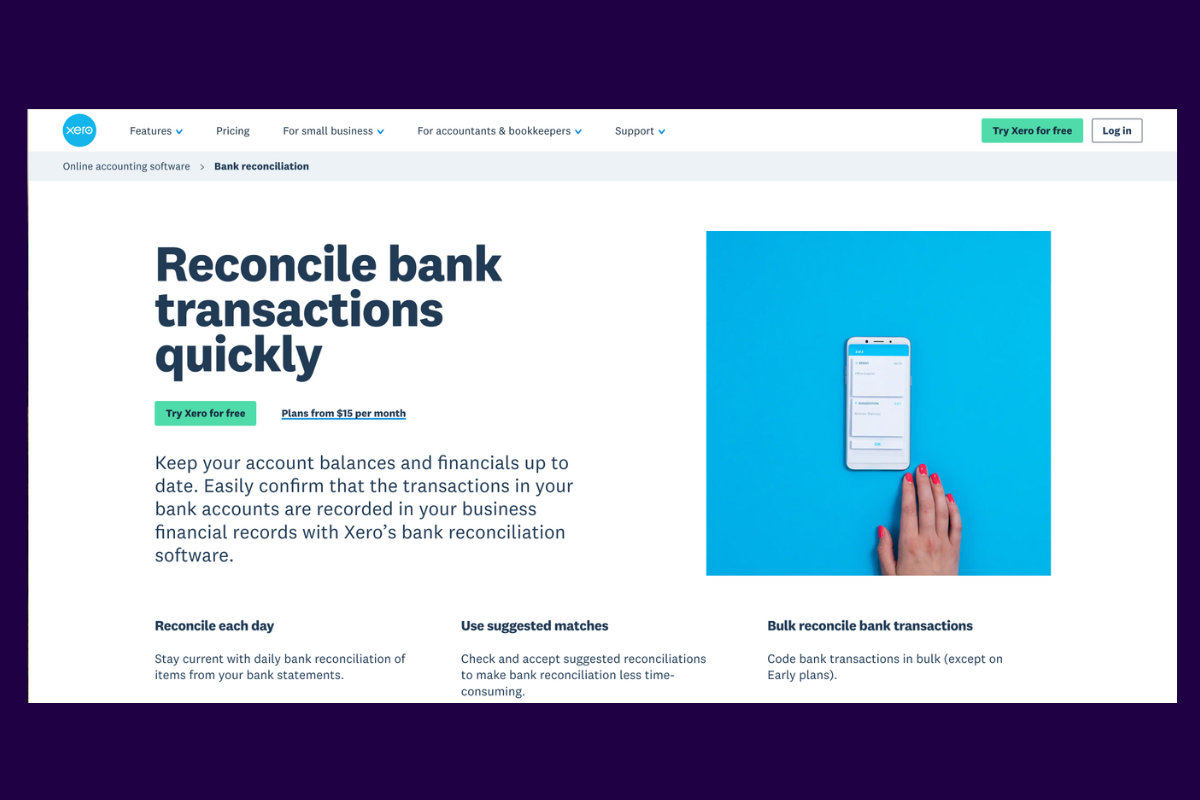
5. Xero
Best for: Small- to mid-sized businesses that are already using the Xero ERP and want access to some basic account reconciliation tools
How Xero Helps Finance Teams
Xero is another general ledger common with small businesses that offers a set of simple account reconciliation tools. While not as robust as specific account reconciliation software like Numeric and BlackLine, some teams will get started with Xero account reconciliation tools and then vet if other tools make sense to invest in.
Xero Features
- Bank Reconciliation: Automatically import and reconcile bank transactions, reducing manual data entry and ensuring accurate financial records.
- Suggested Matches: Check and accept suggested reconciliations to make bank reconciliation less time-consuming.
- Bulk Reconciliations: Code bank transactions in bulk.
- Multi-Currency Support: Manage transactions in multiple currencies, making it ideal for businesses operating globally.
- Real-Time Collaboration: Allow multiple users to access financial data simultaneously, promoting collaboration and transparency within teams.
Xero Pros
- User-friendly interface
- Extensive third-party integrations
- Affordable pricing
Xero Cons
- Limited advanced features for larger enterprises
- Slow customer support according to user feedback
- Typically a strong fit for bank reconciliations but not for full balance sheet reconciliations
Xero Pricing
Xero has tiered pricing plans starting at a fixed monthly rate, with add-ons available for additional features.
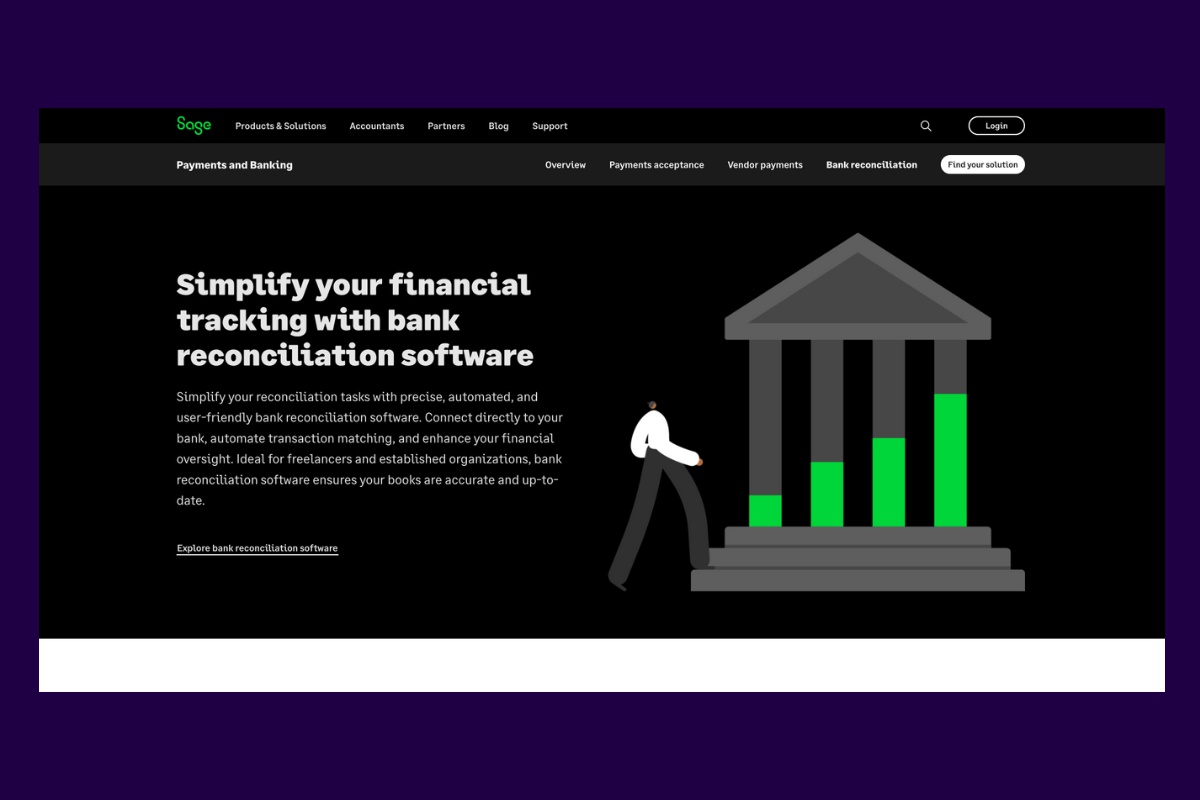
6. Sage
Best for: Small- to mid-sized businesses already using the Sage ERP that want to take advantage of the basic reconciliation capabilities built into the platform
How Sage Intacct Helps Finance Teams
Sage Intacct empowers finance teams by providing advanced financial reporting and automation, making it ideal for organizations that require strong compliance and real-time financial insights. Similar to Xero and QuickBooks, Sage is mostly a general ledger but can be useful for performing reconciliations if you are an existing Sage user.
Sage Intacct Features
- Automated Reconciliations: Connect directly to your bank, automate transaction matching, and enhance your financial oversight.
- Efficient File Import: Swiftly import files with efficiency and seamless integration.
- Transaction Matching: Align bank statements and accounting records.
- Real-Time Reports: Access real-time reports that flag anomalies and enhance compliance monitoring.
Sage Intacct Pros
- Strong financial reporting capabilities
- Scalability for growing businesses
- Excellent multi-entity support
Sage Intacct Cons
- Complex implementation
- Higher cost compared to simpler solutions
- Limited functionality for full balance sheet recons
Sage Intacct Pricing
Sage has customized pricing based on company size and feature requirements.

7. Adra by Trintech
Best for: Mid-sized business that are using Workday
How Adra by Trintech Helps Finance Teams
Adra simplifies and accelerates the financial close process through automation, helping teams reduce manual work and focus on more strategic tasks.
Adra by Trintech Features
- Automated Account Reconciliation: Automatically matches transactions to streamline the reconciliation process, minimizing errors and manual intervention.
- Compliance Support: Ensure compliance with regulatory standards by providing a complete audit trail and supporting documentation.
- Central Dashboard: Consolidate all data into an easily accessible, central location.
- Transaction Matching: Quickly set up match scenarios and rules to automatically review one-to-one, one-to-many, many-to-one, and many-to-many matches.
Adra by Trintech Pros
- Easy implementation
- Automation features
Adra by Trintech Cons
- Limited advanced features
- Primarily designed for mid-sized companies
Adra by Trintech Pricing
Adra comes with customized pricing based on features and number of users.

8. Prophix One
Best for: Mid-sized enterprises looking to transition from manual spreadsheets to more automated processes
How Prophix One Helps Finance Teams
Prophix One enhances financial planning, budgeting, and reporting with advanced automation and analytics, making it ideal for companies that require robust CPM capabilities.
Prophix One Features
- Financial Reporting: Generate detailed financial reports with real-time data, providing valuable insights into business performance.
- Reconciliation Management: Get a comprehensive view of balance sheet reconciliations by tracking completed and overdue items by entity, account, and other options.
- Centralized Workflows: Store all account reconciliation details and adjustment documentation in one single place.
- Reconciliation Templates: Substitute unreliable spreadsheets with structured reconciliation templates that integrate into your close processes.
Prophix One Pros
- Comprehensive CPM features
- User-friendly interface
- Strong support for financial planning
Prophix One Cons
- Expensive pricing for smaller businesses
- Steep learning curve
Prophix One Pricing
Prophix One offers customized pricing based on business needs.

9. SolveXia
Best for: Large enterprises with dedicated teams and ample budgets
How SolveXia Helps Finance Teams
SolveXia automates complex financial processes, reducing manual tasks and improving data accuracy and efficiency.
SolveXia Features
- Unified Reconciliation: Unify and standardize reconciliation in one place instead of relying on different spreadsheets.
- Intelligent Matching: Automate complex transaction matching in a matter of seconds.
- Process Automation: Automate repetitive financial processes such as reconciliations, reporting, and data transformation, freeing up time for higher-value work.
- Data Integration: Seamlessly integrate data from multiple data sources, ensuring accurate and up-to-date financial information.
SolveXia Pros
- Highly customizable platform
- Strong process automation capabilities
SolveXia Cons
- Technical expertise required for implementation
- Higher upfront costs than other account reconciliation software tools
SolveXia Pricing
SolveXia comes with customized pricing based on company size and specific requirements.

10. OneStream
Best for: Large businesses with full-time admins
How OneStream Helps Finance Teams
OneStream streamlines financial processes by integrating consolidation, planning, and reporting into a single platform, reducing complexity and improving data accuracy.
OneStream Features
- Drill-to-Reconciliation: Drill from your balance sheet directly to account reconciliations with a link from reported balances to reconciled accounts.
- Trial Balance Single-Sourcing: Leverage the same data sources, data mappings, account hierarchies, workflows, and security as actuals.
- Reconciliation Alerts: Receive immediate reconciliation status alerts if a previously reconciled balance has changed due to an updated trial balance import.
- Risk-Based Reporting: Deliver risk management reporting on your balance sheet and immediately view the status of all high-risk reconciliations as they relate to your financial reports.
OneStream Pros
- Financial consolidation features
- Scalability for large organizations
OneStream Cons
- Complex implementation
- Higher cost compared to simpler solutions
OneStream Pricing
OneStream has customized pricing based on company size and feature requirements.
How to Choose the Best Account Reconciliation Software
Selecting the right software for account reconciliation for the needs and budget of your team is key to maximize the positive outcomes.
The most important factors and criteria that should drive your decision include:
- Features and Functionalities: First and foremost, the best platform brings together all must-have as well as some nice-to-have tools and features that help streamline and facilitate processes. It helps to make a list of the essential capabilities for your enterprise so that you don’t go for more complicated software than needed.
- Automation Capabilities: The top apps provide automated transaction matching, rule-based reconciliations, unified data centralization, and exception handling to automate repetitive processes, reduce manual work, eliminate human error, and save time.
- Customization Options: You should look for tools that adapt to your enterprise’s workflows and can be easily customized to your specific needs without excessive extra costs.
- Reporting and Audit Trail: You should search for software that offers custom, exportable reports and that leaves your finances audit-ready to enable transparency and compliance.
- Third-party Integrations: The best account reconciliation software integrates with your ERP, other financial and business tools, and banking systems problem-free.
- Scalability: Good software is able to grow along with your business stakeholders, customer base, and transactions volume so that you don’t have to waste time on switching to a new platform in a few short years.
- Implementation and Ease of Use: The best options out there are easy to get started with and provide a user-friendly, intuitive interface that doesn’t require special training.
- Use Access Control and Collaboration: The top platforms allow you to assign specific roles and access to each team member while facilitating teamwork and cooperation via automated tasks and notifications.
- Customer Support and Training Availability: The best SaaS companies offer tailored assistance during implementation and onboarding and beyond so that your team can address any challenge before it turns into a large-scale problem.
- Security and Compliance: You should focus on apps that come with robust security provisions and built-in regulatory reporting features to protect your data and guarantee compliance with local and international standards.
- Pricing Structure: Importantly, the best software has a clear pricing structure that depends on access to tools and number of users to ensure that you pay only for what you need to automate account reconciliation. There are no hidden fees in the form of implementation and integration costs, training expenses, and maintenance fees.
- Value for Money: Ultimately, the best accounting software offers the best value for money, striking the right balance between features and cost.
Focusing on these criteria, your team can find the right financial close management software to empower your team members and let them devote their precious time to more strategic aspects than monotonous manual tasks.
Bottom Line
Account reconciliation software has carved its space in the accounting industry, offering unparalleled efficiency and accuracy. Automation tools not only speed up the reconciliation process but also mitigate human errors, a boon for growing accounting departments. For maximum efficiency, it's essential to ensure seamless integration with current systems and provide adequate training to employees during the transition.
While account reconciliation software can transform financial processes, its selection should be done judiciously. Each business has unique needs, and what works for one might not suit another. A well-researched decision, keeping in mind both the advantages and potential challenges, will ensure the software genuinely benefits the company's financial operations.
FAQs
How Does Account Reconciliation Software Improve Financial Accuracy?
Account reconciliation software enhances financial accuracy by:
- Automating Manual Processes: Reduces human errors by automating data entry and transaction matching.
- Providing Real-Time Data Updates: Ensures that financial records are always up to date, which is crucial for accurate reporting.
- Enabling Error Detection: Quickly identifies discrepancies, allowing for immediate corrective actions.
Choosing the right account reconciliation software is a pivotal decision that can significantly streamline your financial processes, ensuring accuracy and efficiency.
What Are the Common Challenges in Implementing Reconciliation Software?
Implementing reconciliation software can come with a number of challenges that depend on the tool that you select.
Having said that, some common challenges include:
1. Initial Setup
- Data Migration: Transferring existing financial data into the new system can be time-consuming.
- Configuration: Setting up the software to match your specific processes may require significant effort.
Before making a final decision on the best software for your team, ask providers that you're considering working with to outline what's typically involved in implementation, what common hiccups are, and what a sample timeline looks like.
Compared to other software tools, implementing account reconciliation software is often a faster process than most but is largely dependent on the product of choice with cloud-based options like Numeric entailing a one-week implementation timeline and others like BlackLine or Arda by Trintech being a fair bit more involved, averaging 4.5 months to fully implement.
2. Learning Curve
- User Training: Employees may need training to use the new software effectively.
- Customization: Understanding how to customize the tool to fit your needs can take time.
To prevent a steep learning curve, ask providers what initial training and ongoing support look like. Review the help centers and support docs if possible and consider setting up a conversation with a customer support team member to gauge the user-friendliness of the tool.
3. Integration with Existing Systems
- Compatibility: You need to ensure that the new software integrates smoothly with your existing ERP and file storage system.
- Data Consistency: Maintaining data consistency across multiple platforms can be challenging, especially if your numbers come from numerous sources.
With proper vetting before choosing the right account reconciliation software, your team should be able to go for an option that works well with your existing tools while having a clear sight into any potential challenges getting your software up and running.















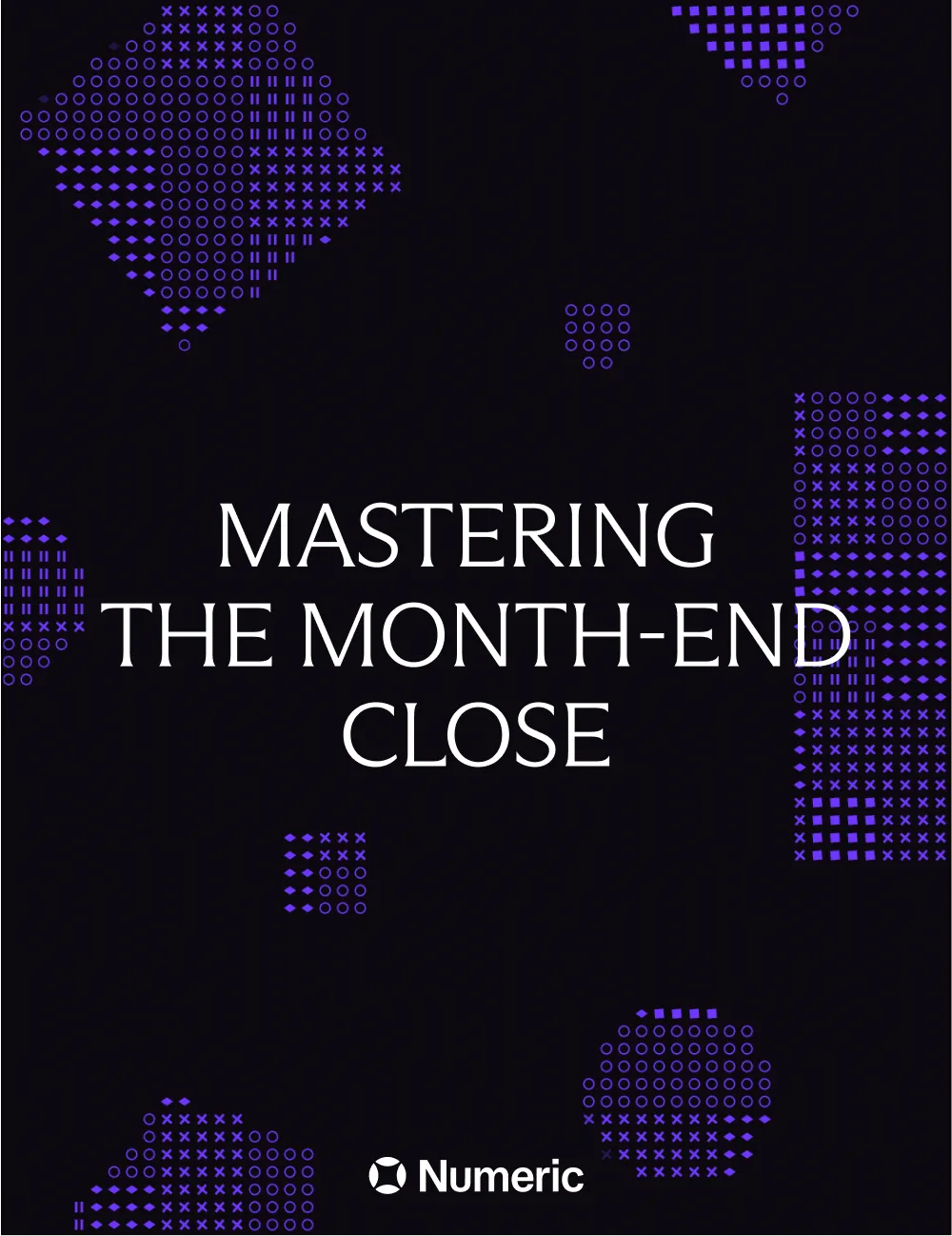

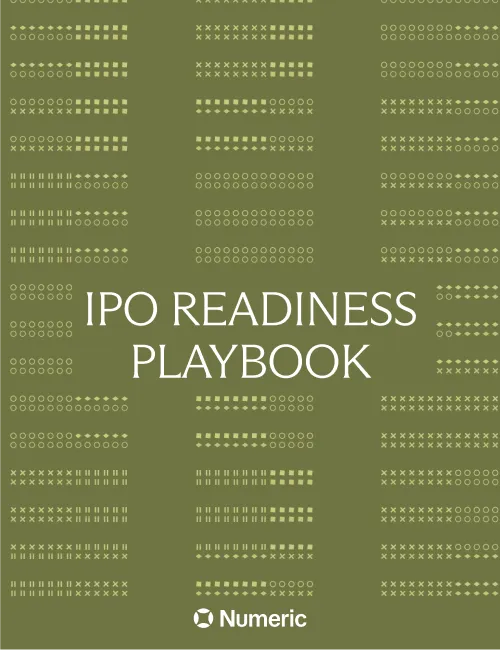

.png)
.png)
.png)